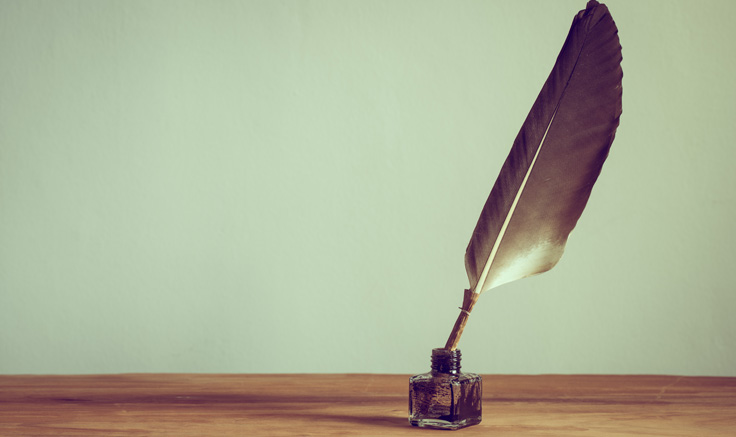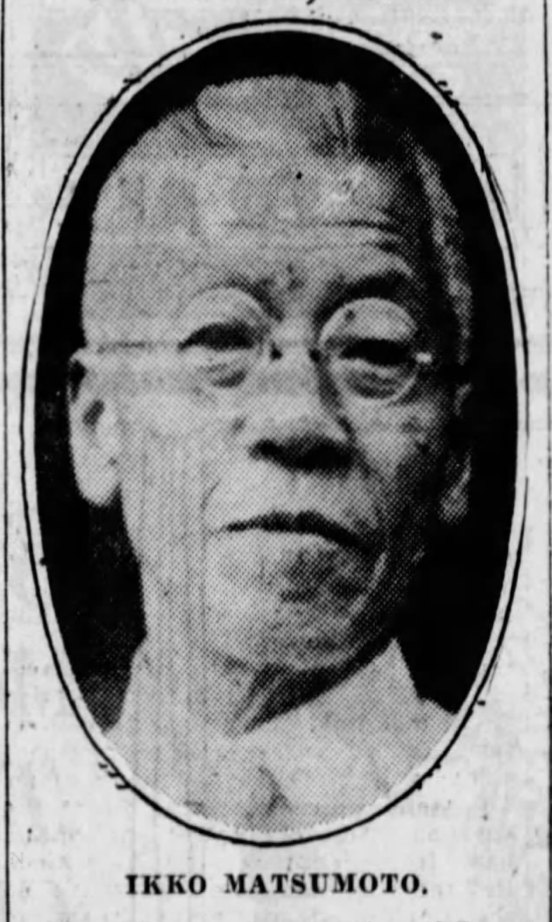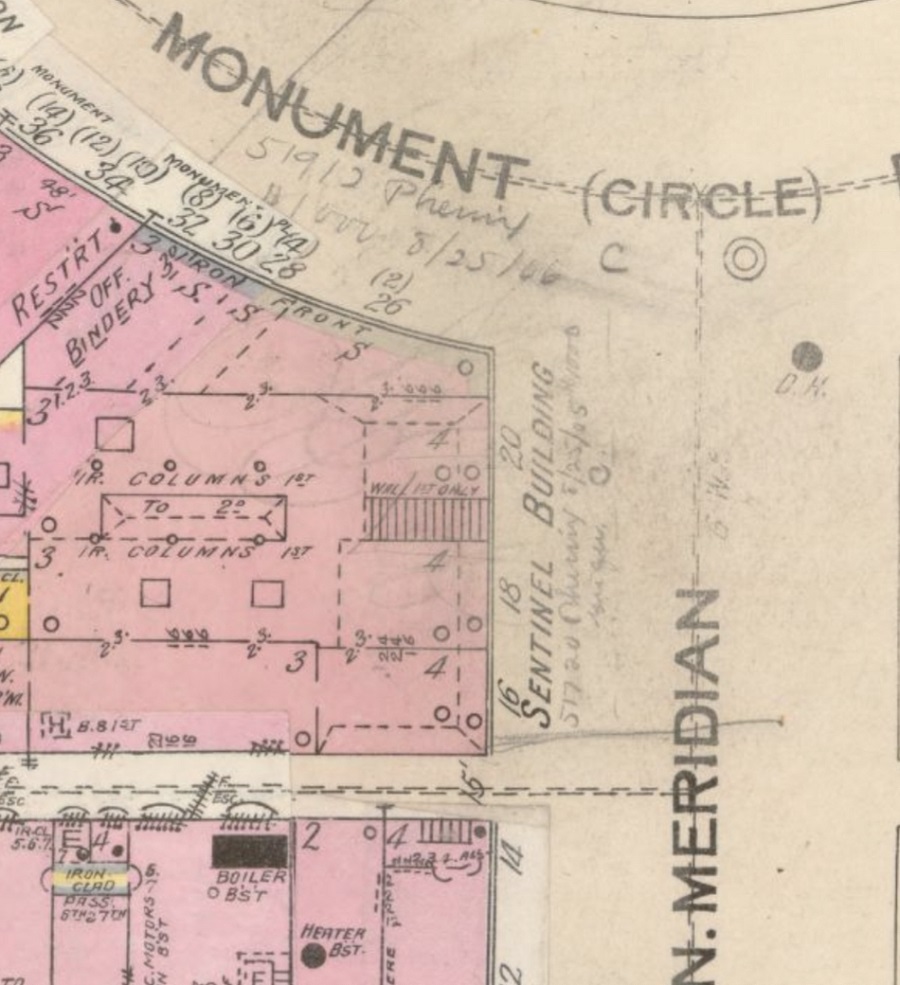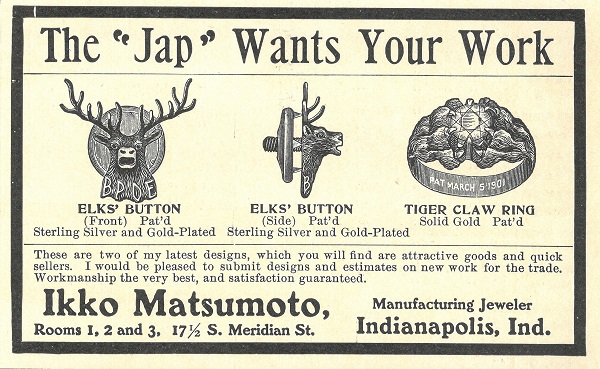
Purchase Tickets
Asian Businesses of Monument Circle: Ikko Matsumoto
May 6, 2022

Indianapolis of the 19th and 20th centuries never had a large enough Asian population that would lend itself to create nor sustain an ethnic commercial corridor such as a “Chinatown.” This is partly due to a series of anti-Asian laws which stymied potential growth. From 1892 through 1948, Monument Circle would host a number of Asian businesses; a jewelry designer and decorative arts craftsman, an oriental rug and linen store, a restaurant, and a nightclub.

[Cropped] Indianapolis Star, December 15, 1935
The first Asian business on the circle was jewelry designer Ikko Matsumoto; who co-operated a jewelry manufacturing business in the Sentinel Building, located in the southwest quadrant of Circle Drive (now Monument Circle). While it was on the circle, the building entry would face Meridian Street.

[Cropped] Sanborn Map #6, 1898, Indianapolis Sanborn Map and Baist Atlas Collection
Ikko Yahe was born in Tokyo, Japan in 1862. At the age of 12, he learned how to skillfully design and manufacture jewelry from his uncle and later took his last name, Matsumoto. As a young man, he left Japan and arrived in the United States in 1887. He lived in San Francisco, Chicago and Boston. While in Boston he met and married Frances Piper Post in 1890 and they later set forth toward Indianapolis in 1892. The Matsumoto’s had no discernable connection to Indianapolis, only hearing it was a good place to start a business.
DYER & MATSUMOTO
June 11, 1892, was Ikko’s first newspaper advertisement as a jeweler with his business partner George G. Dyer. George was both a jeweler and an engraver while Ikko’s talent was more notably as a designer and manufacturer. Dyer and Matsumoto both specialized in watch repair and jewelry but were known for manufacturing gold and silver novelties such as spoons, class rings, fraternity pins and badges. By 1895 their growth was widely reported, noting that their silver design work was sought well outside of the city and as far south as Chihuahua, Mexico.
Their partnership was short-lived. In April of 1896, both Ikko and George mutually dissolved their partnership and residency in the Sentinel Building. George would go into business with his son and operate their business at 18 ½ N. Meridian, with Ikko at 17 ½ S. Meridian. Per George’s 1928 obituary, he was noted as the “Tiffany of Indianapolis.”
STRUGGLE TOWARD CITIZENSHIP: 1896-1900
On October 13, 1896, Ikko was granted his first papers toward naturalization. In 1900, he applied for his second papers, the final step toward citizenship. Judge Carter of the Superior court paused on his application, having to examine current immigration law. In the Indianapolis Journal, Judge Carter discussed Ikko’s case, mentioning laws against prohibiting the Chinese from becoming naturalized and was unclear if this also included those from Japan. Carter commented that after the Civil War citizenship applied only to white men and those of the African ethnicity, saying, “for a few years the word ‘white’ was stricken from the law, but it was again inserted to bar the Chinese from becoming citizens.” He “regretted very much to deny the papers for the time being,”and said, “there was certainly some way out of it.” Another notable Asian Indianapolis resident, Moy Kee, a businessman and civil rights advocate nicknamed the “Chinese Mayor,” would also be naturalized. His naturalization, based on a technicality, was granted here in Marion County, sometime before or in 1897. Moy’s citizenship status would later be rescinded after a petition was filed in 1911, alleging it was wrongfully obtained.
SUCCESS, SCANDAL AND RACISM:
There were several jewelers and manufacturers in Indianapolis, Ikko was recognized for his design work and special commissions. Primarily his pins for the Benevolent and Protective Order of Elks (BPOE) and Freemasons, of which he was also a member.

Advertisement, 1901, Indiana Historical Society
But from 1902 to 1904, he was embroiled in scandal when he was arrested and charged with larceny over a small amount of gold left over from a repair. During the proceedings, the local newspaper noted the plaintiff’s blatant racism by explicitly requesting an all-Russian jury. This “fair trial” would capitalize on the tensions around the Russo-Japanese War, coupled with national unease towards Asian immigrants. Ikko was cleared of any wrongdoing and quickly filed a defamation case against the plaintiff. And for a second time, Ikko was awarded justice in court.
In Indianapolis, the Asian community would be predominantly Chinese and small. Moy Kee the “Chinese Mayor” also enjoyed a similar social status as Ikko. In 1904, (prior to a visit by Prince Pu Lun of China), Moy commissioned Ikko to design a gold pin with diamonds and rubies that he intended to present to the prince.
IKKO THE ARTISAN
Ikko’s design talent expanded outside of his workroom on S. Meridian Street. In 1905 his home at 1903 Highland Place was featured in the local newspaper for his Japanese-style garden. His garden featured a replica of the Tokyo of his youth with miniature houses, castles, streams, bridges and an 8 long foot lake. Carefully selected plants, flowers and rocks were placed in this sprawling landscape created by his employee Y. Sugioka. Sometime between 1906-1907 Ikko relocated his business back to Monument Circle, specifically the northeast quadrant in the American Central Life building.
His foray into museums would come in 1911 when the John Herron Art Institute (presently Indianapolis Museum of Art at Newfields) exhibited Japanese tapestries and cloisonne enamel vases. They were on loan from Mrs. Matilda Gresham, who was presented these items by the emperor of Japan. Matilda’s late husband, Walter Q. Gresham was the 33rd U.S. Secretary of State. For this exhibit, Ikko created step-by-step models illustrating the cloisonne enamel process. The following year he was selected by jurists for the fifth annual retrospective of Indiana Artists at the John Herron Art Institute. Other notables in this show were members of the Hoosier Group; William Forsyth, T.C. Steele, Otto Stark, John Ottis Adams, and Richard B. Gruelle. Additionally, African American painter John W. Hardrick. The aforementioned artists, excluding Ikko, are presently a part of the IMA’s permanent collection.
His clientele was some of Indiana’s wealthy notables and continued to expand into decorative work. Native Hoosier and Auto-Industrialist, Carl G. Fisher commissioned him to create a large copper mantel and animal-inspired copper relief tiles for several rooms in his 200-foot yacht named Shadow K in Miami, Florida.
Ikko’s life was full of notoriety and by newspaper accounts, was seemingly a beloved member of the City of Indianapolis. On December 14, 1935, Ikko Matsumoto passed away at the age of 72.








